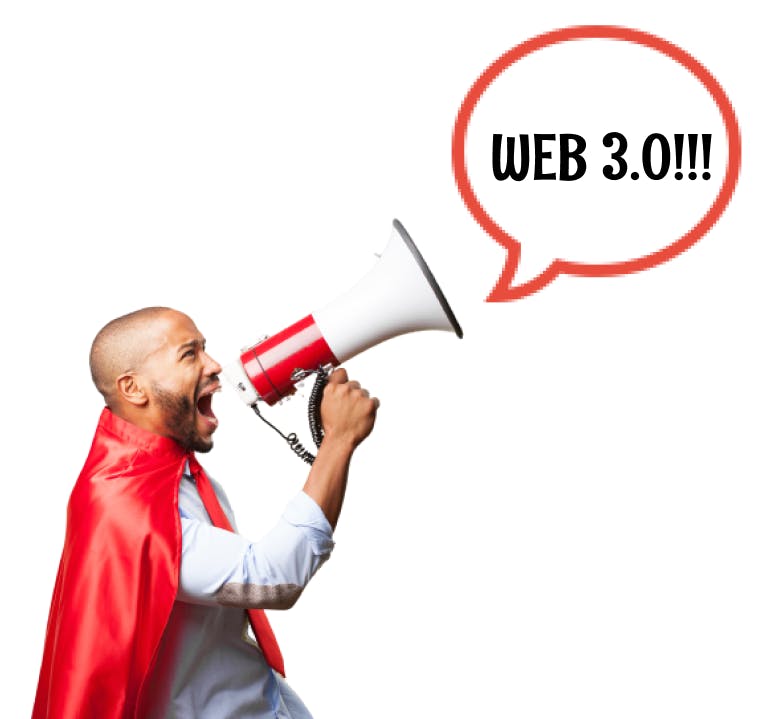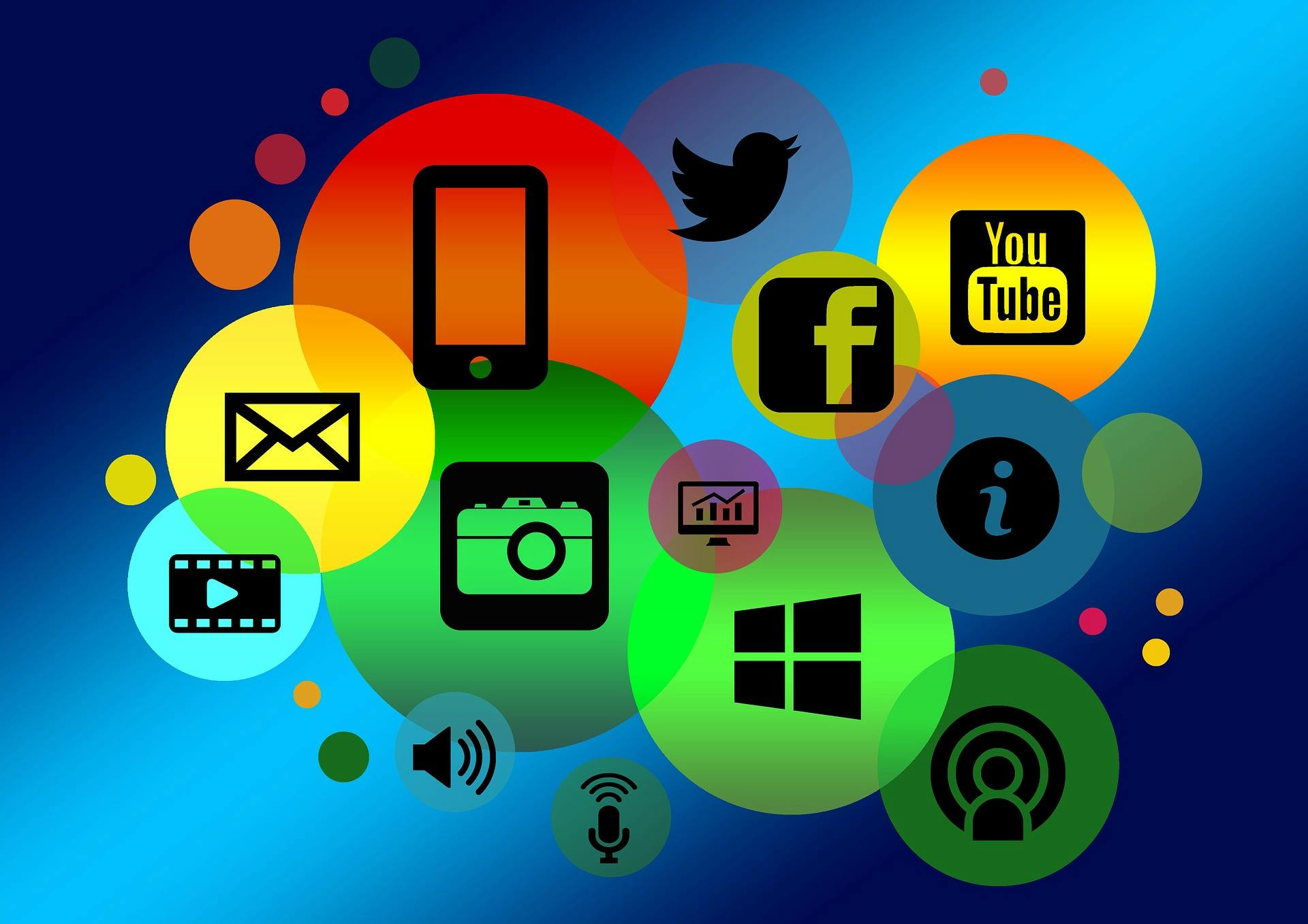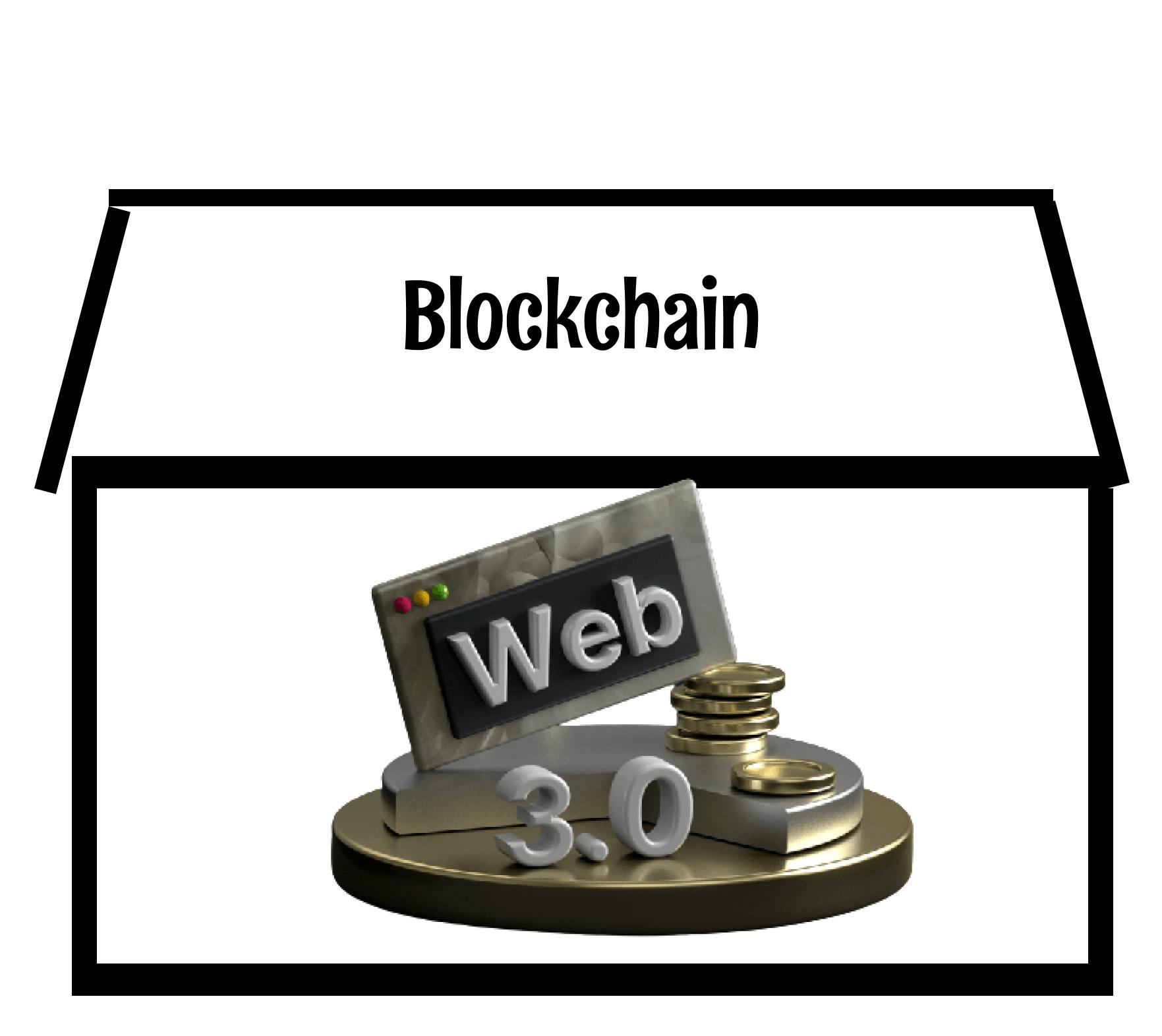Introduction

It is no surprise you must have heard the talk of the town. On the televison, on the radio, on Twitter, Instagram, on Tech Spaces, even among friends, Whatsapp groups. Yes, the talk of the town is Web 3.0. And I apologise if you may not have heard it, or you rather should apologise, haha! Just kidding. Before we begin, what is web? And what is 3 doing with it?
What is the Web
When you hear web, you probably think of your browser. You are kind of right. The web refers to the world-wide-web. According to wikipedia:
The World Wide Web (WWW), commonly known as the Web, is an information system where documents and other web resources are identified by Uniform Resource Locators (URLs, such as example.com), which may be interlinked by hyperlinks, and are accessible over the Internet.
For dummies and children, the web is what gives us all the information we need any time we browse. And we typically use web browsers to access the web.

It would be wrong to talk about the web without talking about the father of the web, Tim Berners-Lee. He founded the web in the year 1989 and he is 66 years old as at the time this article was written. That is not quite a long time ago. That is to show you the speed at which the world is progressing.

So what is Web3 And Web2? And their brother Web1?
Web3 and Web2 are the different timelines and characteristics of how the web has changed. In other words, we can say it is the upgrading of the web. As users of software, we often hear version. Like version 1, version 2, even the latest android version as at the time this article was written is version 12. So the numbers attached to Web here means the different versions of the web. Before we answer the heading question above, kindly note that there was once a brother of this two. Its name is Web1. It's the oldest of the three. So we must talk about it as we talk about the other two?
What is Web1?
There was a time when you visit the web and all you will see is just a html page. No beauty or aesthetic attributes. If you are conversant with web development, you probably would have heard about CSS. Yes! You go it right. There was little or no CSS. Also, there were no functionalities you see on the web today as at then. No sliders, no carousels, no animations, no toggles, and many more. In the developer world we could say, there was little or no JavaScript! The reason for this was because it was new, and the web didn't have lots of people using it. So who cares? Well at the moment we care! They were just few people who used it, like military personnel. Web1 is often referred to as read-only. This is because when you visit it, you only seek information. You have no intentions of posting anything, creating a live feed of what is happening in your area, writing an article, etc. So you basically only want to read information on the web. It was the boring time of the web!
What is Web2?
Web2 is next after Web 1. It was here we probably knew there was the web. This was when popular websites came to the limelight. Websites like Facebook, Yahoo, Hashnode, Edpresso, Wordpress, etc.
"Web 2.0 is the business revolution in the computer industry caused by the move to the internet as a platform, and any attempt to understand the rules for success on that new platform." - Tim O' Reilly
Web2 is the upgraded version of Web1. Here you see websites and web pages filled with rich contents, designs, dynamic functionalities, user-generated content. This was when social media skyrocketed!. Other features of Web2 include powerful applications and services on the web like podcasting, video streaming, map services like Google map, blogging, e-commerce, etc.
It is worth to note that we are probably in the last days of Web2. However, it will still stay around for a while before the total adoption of the promising Web3, the youngest of the three brothers. But I must say that there are some Web2 technologies, websites and apps that may not go away for a long time.
What is Web3?
Also known as the semantic web, Linked Data Web, the Web of Data, the Enterprise Information Web, and Web 3.0. This is the third generation or version of the web.

It is worthy to fore-remind you that Web3 is not Blockchain, but will be driven and housed by Blockchain technology.
Some tech experts at the time of writing this article do not really like the idea of Web3. Example is the former CEO of Twitter.
Jack Dorsey, co-founder and former CEO of Twitter, dismissed Web3 as a "venture capitalists plaything" - source: wikipedia(visit here)
So what is Web3? In simple term, Web3 is a form of of the world wide web that no one will own. It will be decentralised. It belongs to everyone one. For instance, there will be no owner as Mark Zuckerberg owns Facebook.
“There’s a small group of companies that own all this stuff, and then there’s us who use it, and despite the fact that we contribute to the success of these platforms, we don’t have anything to show for it.” - Mat Dryhurst
With Web3 we have powerful features of the web like decentralisation, trustless and permissionless, artificial intelligence (AI), machine learning, connectivity and ubiquity.
Most of these features will be provided by the Blockchain Technology! If you are not sure what Blockchain is, here is my short article on its characteristics What are the characteristics of blockchain.
One characteristic of blockchain is Data Immutability. With this in Web3, and with cryptography, we have incorruptible data. For any data to be altered, there must be a unanimous agreement of every node. This makes blockchain secure. Thus, this feature solves the problem of fraud. Web3 looks promising due to some reasons. One reason is due to other products powered by blockchain, and those to come. For example, we have crypto-currencies, NFTs, Metaverse, etc. You probably have heard of Bitcoin, Ethereum, Trust Wallet, Metamask, NFT Market, Binance, etc. Most or some of them are powered by Blockchain technology.
There is really no much idea about how Web3 will work but let us look at the major differences between Web3 and Web2.
Major Differences between Web3 and Web2
The following are some major differences between Web3 and Web2.
| Web3 | Web2 |
| Decentralised | Centralised |
| No or little censorship | No censorship |
| No downtime | Downtime can occur |
| Expensive | Cheap |
| Poor Scalability | High Scalability |
| Requires more knowledge to use | Easy to use |
- Decentralised and Centralised: With Web3, there is no one that has the power to suspend your account, remove your post, etc. This is simply because no one can alter what has been put on the web. There is no database owned by one company that will contain your data so as to remove, delete and update your content.
- No or little censorship and No censorship: Since there is no proprietary server owned by anyone that houses data on Web3 and due to the anonymousness which Blockchain provides, no one can really tell who you are. For us to know a particular person would mean to know his address on the blockchain but not in real life.
- No down time and Downtime can occur: Once upon a time Facebook was down for hours. This can never happen in Web3. This is because, Web3 will be powered by super and high processing computers around the world known as nodes. When one node fails another one picks up.
- Expensive and Cheap: For a developer like me who wants to deploy an application on a blockchain network, I will have to pay. This is called gas fees. Because the people who set up nodes and validate transactions and consensus on a typical blockchain network have to be rewared. And the charge is really breathe-taking. However, as for Web2, one can easily deploy an app to production with little or no cost.
- Poor Scalability and High Scalability Scalability is a problem for Blockchain. Scalability is how a system can be able to adjust if there are changes. Because there can be as many transactions or records as can be per second on a blockchain network that powers a Web3 application, it will require more time. This is because, for a transaction or a record to be stored on a blockchain network, miners will need to mine. Unlike in Web2, everything is fast. There is no need for validation, or cryptography and other features embedded with the Web3.
- Requires more Knowledge and Easy to use: For you to use any of the current products of Blockchain you will need to learn some few stuff. You don't just bump in. It is easy for you to use any of the Web2 products available today. You don't really require much knowledge to begin with.
I hope you had a great time! Thanks for reading and learning!
To know more about blockchain, visit this sites Blockgames' site, Nestcoin's site and Zuriteam's site

